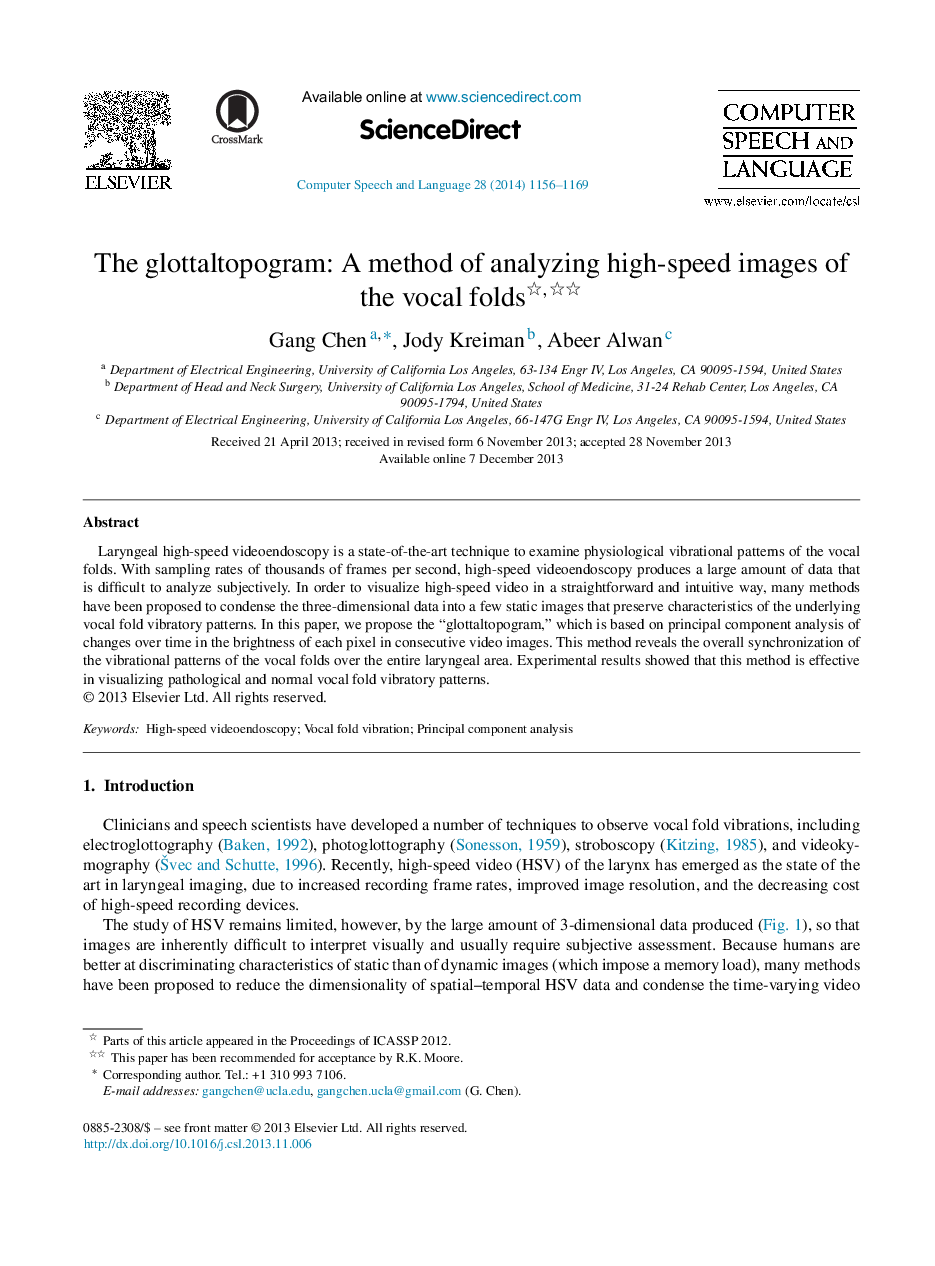| Article ID | Journal | Published Year | Pages | File Type |
|---|---|---|---|---|
| 558278 | Computer Speech & Language | 2014 | 14 Pages |
•We propose a method to visualize laryngeal high-speed video in an intuitive way.•This method reveals the overall synchronization of the glottal vibratory patterns.•This method visualizes pathological and normal glottal vibratory patterns.
Laryngeal high-speed videoendoscopy is a state-of-the-art technique to examine physiological vibrational patterns of the vocal folds. With sampling rates of thousands of frames per second, high-speed videoendoscopy produces a large amount of data that is difficult to analyze subjectively. In order to visualize high-speed video in a straightforward and intuitive way, many methods have been proposed to condense the three-dimensional data into a few static images that preserve characteristics of the underlying vocal fold vibratory patterns. In this paper, we propose the “glottaltopogram,” which is based on principal component analysis of changes over time in the brightness of each pixel in consecutive video images. This method reveals the overall synchronization of the vibrational patterns of the vocal folds over the entire laryngeal area. Experimental results showed that this method is effective in visualizing pathological and normal vocal fold vibratory patterns.
